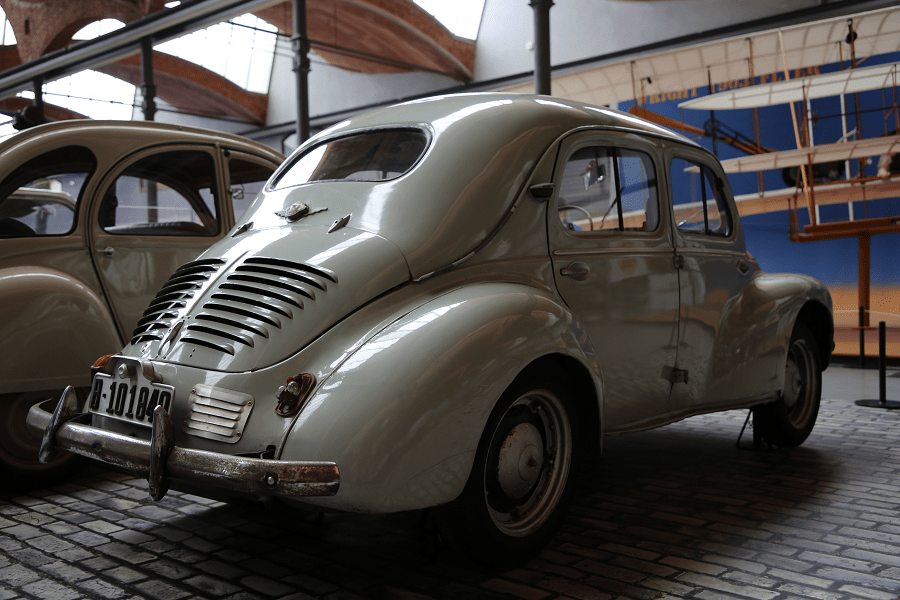Renault 4/4 4CV
The Renault 4CV is a car produced by the French company Renault from August 1947 through July 1961. It is a four-door economy car with its engine mounted in the rear and driving the rear wheels. It was the first French car to sell over a million units, and was superseded by the Dauphine.
The 4CV was of monocoque construction, 3.6 m (11 ft 10 in) in length with front suicide doors.
CV is the abbreviation of chevaux-vapeur, the French equivalent to “horsepower” as a unit of power. The name 4CV thus refers to the car’s tax horsepower.
The 4CV was originally conceived and designed covertly by Renault engineers during the World War II German occupation of France, when the manufacturer was under strict orders to design and produce only commercial and military vehicles.
Between 1941 and 1944 Renault was placed under the technical directorship of a francophile engineer, Wilhelm von Urach (between 1927 and 1940 employed by Daimler Benz) who failed to notice the small car project emerging on his watch. A design team led by the company’s technical director, Fernand Picard, recently returned from Renault’s aero-engine division to the auto business and Charles-Edmond Serre, who had been with Renault for longer than virtually anyone else, envisioned a small, economical car suitable for the period of austerity expected after the war.
Model of 1953
Made in Spain (Valladolid, Castile and León )
Power: 17/21 HP
Engine: 737 cc; 4 cylinders
Max. speed: 90 km/h













